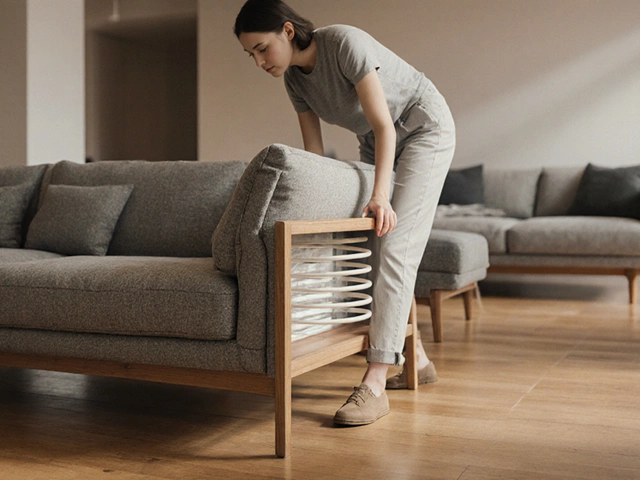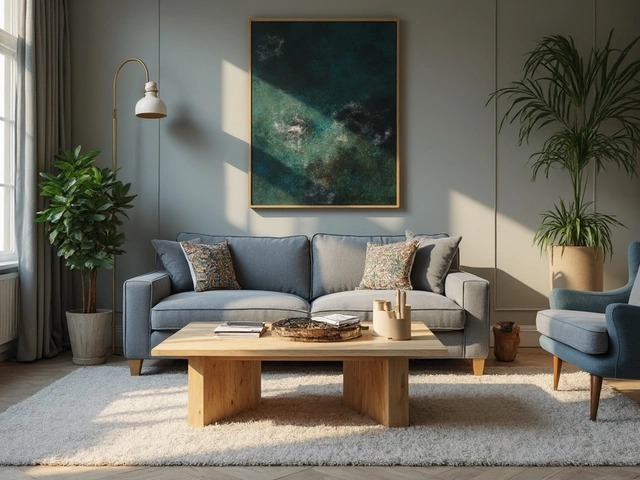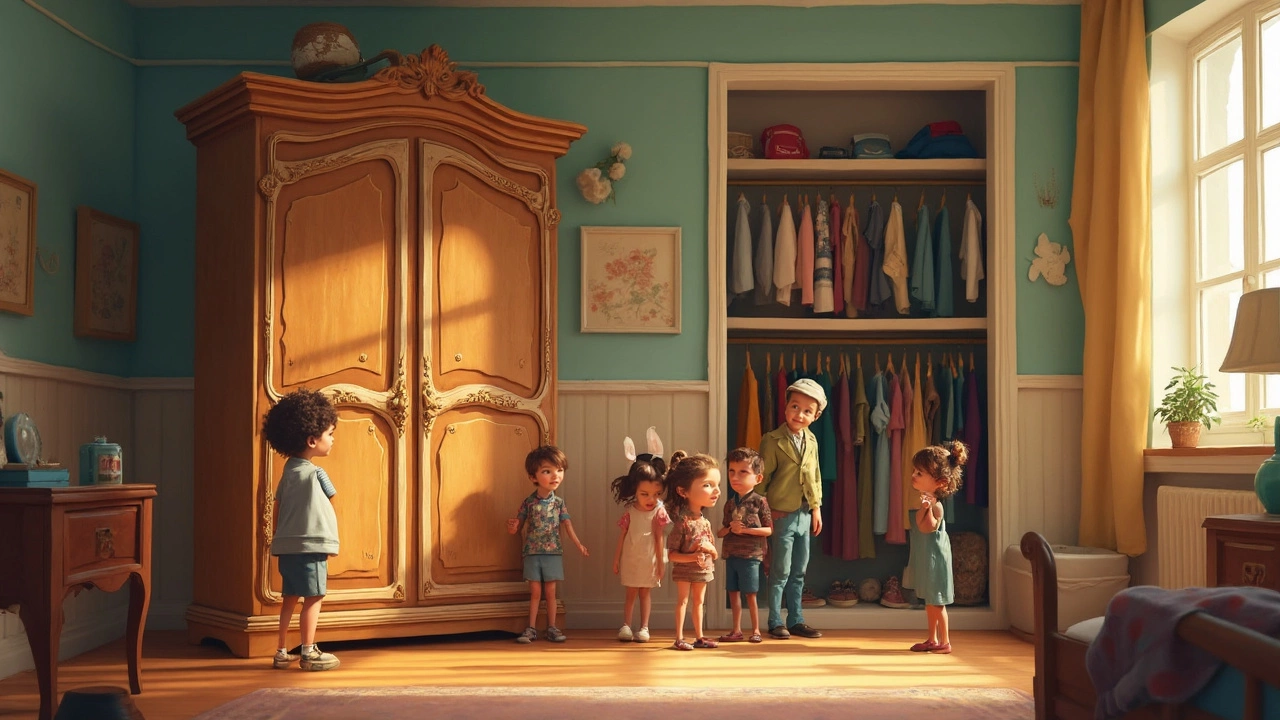 27
Jun,2025
27
Jun,2025
Picture this: You're scrolling real estate listings for fun (or maybe out of sheer curiosity, like me) and you stumble across a phrase as American as apple pie—"Walk-in closet." But take the same search overseas, say, in the UK or Australia, and you'll hear people obsessing over fitted wardrobes instead. Same purpose, totally different words. It's not just a little language mix-up; it's a tells-you-everything story about history, culture, and, honestly, the American obsession with storing stuff.
The Surprising Roots of ‘Closet’—From Prayer Rooms to Socks
Let's time travel back to England in the 1600s. Houses were legit cold and drafty, not exactly cozy hangouts. If you had money, you’d have a "closet," but back then, this wasn’t where you threw your laundry or hid holiday presents. A closet was a tiny, private room—a spot to read, pray, or just escape life’s chaos for a minute. The word comes from the French “clos,” meaning “enclosed.” So, it totally makes sense.
Fast forward to the 18th and 19th centuries, the closet kept shrinking and changing. People needed safe, enclosed nooks for their valuables or personal belongings—so the idea of a closet shifted to being a small storage room. Eventually, it got even smaller, giving us what Americans think of today as the built-in clothes closet. Meanwhile, wardrobes (from French “garderobe”—literally “guard your robe”) were still big freestanding cabinets, often beautifully carved and bought with the house.
Think about this: In lots of American homes built after 20th century, bedrooms simply had a closet as part of their basic structure. Meanwhile, you’d be hard pressed to find a built-in closet in classic British homes of the same era. Brits still rely on wardrobes—you buy the cabinet, not the built-in alcove.
So, next time Orla complains that her hoodie is lost in her “closet mountain,” blame several centuries of evolving living spaces and language, not her tidying skills.
Closets Became the American Dream (Yes, Really)
Why are closets such a big thing in America, when so many people elsewhere still stick with wardrobes? Part of it’s territory—good old American abundance of space. In the 1900s, as more people moved into bigger, single-family homes, architects started adding small clothes storage into bedroom walls on purpose. It was like a little bonus feature. As suburbs mushroomed, closets became a standard, something people expected, not a fancy extra.
By the 1950s, suburban sprawl brought three-bedroom houses with built-in closets to the masses. American culture quickly turned closets into a subtle sign of status. The bigger (walk-in, hello!) the better. Legendary TV shows—think Carrie Bradshaw’s dreamy closet moment—turned closets into objects of envy. Fun fact: According to a 2021 National Association of Home Builders survey, about 94% of new homes in the U.S. have a master bedroom walk-in closet, compared to less than 20% in the UK. Closet became as American as corn dogs at the county fair.
The upside? Closet space can seriously boost your home’s resale value, sometimes adding thousands to an asking price. Smart tip: If you’re renovating and debating between a built-in closet or a wardrobe, know your market. In the U.S., closets often win out, but in many European cities, a fancy wardrobe catches the buyer’s eye more.
| Feature | USA (Closet) | UK (Wardrobe) |
|---|---|---|
| Usually Built-In? | Yes | No |
| Preferred by Buyers | Closet | Wardrobe |
| Standard Bedrooms | Include Closet | No Closet—Buy Free-standing |
| Space Requirement | Architectural, Takes Up Floor Area | Can Be Moved, Freestanding |
| Popularity (% New Homes) | 94% | 20% |
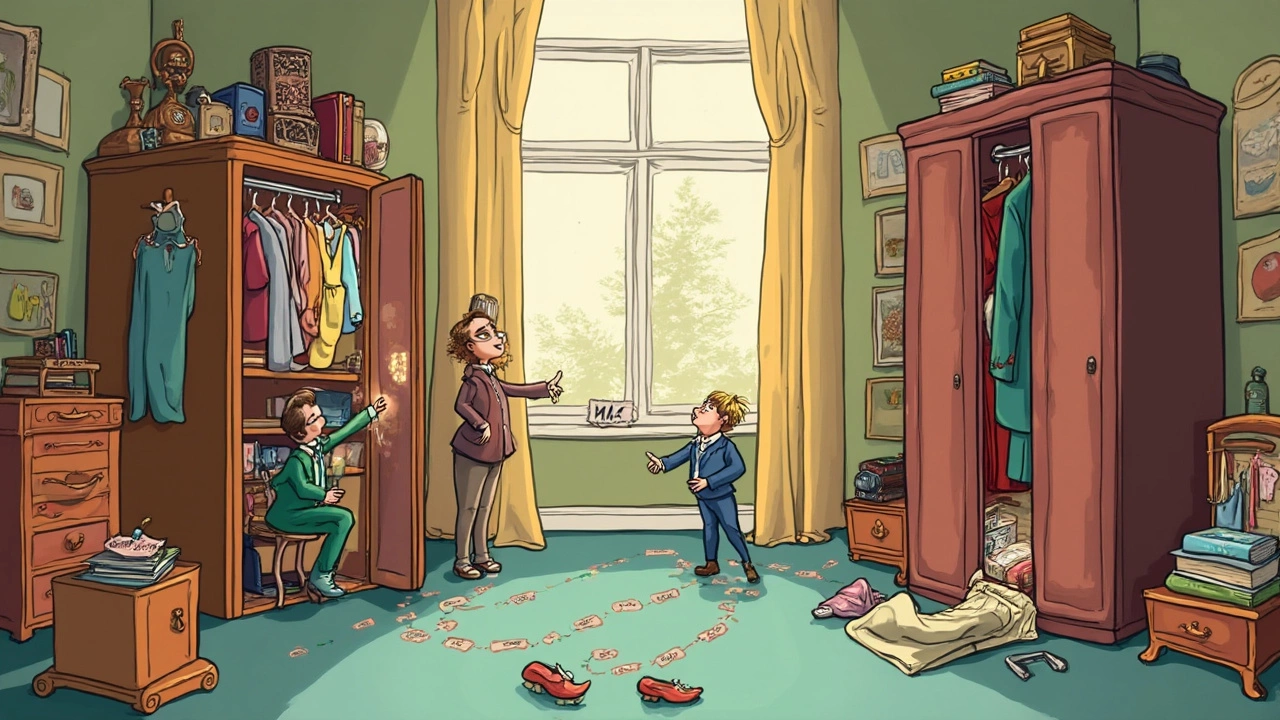
The Language Shuffle: ‘Closet’ Goes Mainstream
Language is one weird playground. "Closet" stuck in America because English-speaking settlers were building brand new houses, not living in centuries-old stone cottages like back in England. When builders needed a word for these small, built-in storage spots, “closet” was ready and waiting. “Wardrobe” just sounded fancier and, well, a bit European.
Over time, “closet” picked up even more meanings. “Skeletons in the closet.” “Coming out of the closet.” The word’s taken on metaphors for secrets, private lives, and even personal transformation. Funny enough, Brits are starting to use “closet” more these days, mostly through American TV and movies, but they still default to “wardrobe” for furniture.
If you’re new to American English, here’s a little cheat sheet (especially useful if you’re shopping online or moving cross-country):
- In the U.S., "closet" is usually built into the wall. It can be walk-in (room-size) or reach-in (just deep enough for a rail and some shelves).
- In the U.K. or Australia, “wardrobe” means a big piece of furniture, usually freestanding, where you hang clothes.
- Want that classic look? A wardrobe fits Victorian chic. Prefer modern? Closets are usually hidden behind sliding or hinged doors, sometimes blending into the wall perfectly.
So next time your favorite American YouTuber raves about their custom closet lighting, just remember—they didn’t mean a piece of furniture you could drag across the floor. They’re talking built-in, wall-to-wall storage magic.
Closets, Wardrobes, and the Art of Organization
Here’s the twist—whether you call it a closet or a wardrobe, organizing it is a universal pain. Americans have gone wild for closet organization systems. Yes, there are entire companies that just design your closet space (think The Container Store or California Closets). The most popular upgrades? Shoe shelves, accessory drawers, LED lighting, and those TikTok-famous color-coded clothing rails.
In many European homes, wardrobes are handed down through generations, so you’ve got sentimental value mixed with storage. In the U.S., people are more likely to rip out an old closet and start fresh. My cat Tigger would probably turn any closet into a napping empire, but I mostly use mine to stash a chaotic blend of gym shoes, holiday wrapping paper, and the suitcase we use twice a year.
If you’re struggling with clutter, here’s what’s working for a lot of folks on both sides of the pond:
- Go vertical—add extra shelves up high for things you rarely use.
- Boxes and baskets: Group stuff by purpose, so you can find socks without crawling on your hands and knees.
- Lighting: Even battery-powered stick-on lights go a long way in a dark closet or deep wardrobe.
- Edit, edit, edit: Every six months, take everything out and purge what you don’t wear (I know, easier said than done).
- If you’re shopping for a wardrobe, measure the space first. Nothing is more frustrating than wedging a giant armoire through a Victorian hallway.
Fun fact: Americans, on average, own 88 pieces of clothing per person (PLOS ONE, 2019), twice what Europeans typically have, so built-in closets definitely earn their keep!
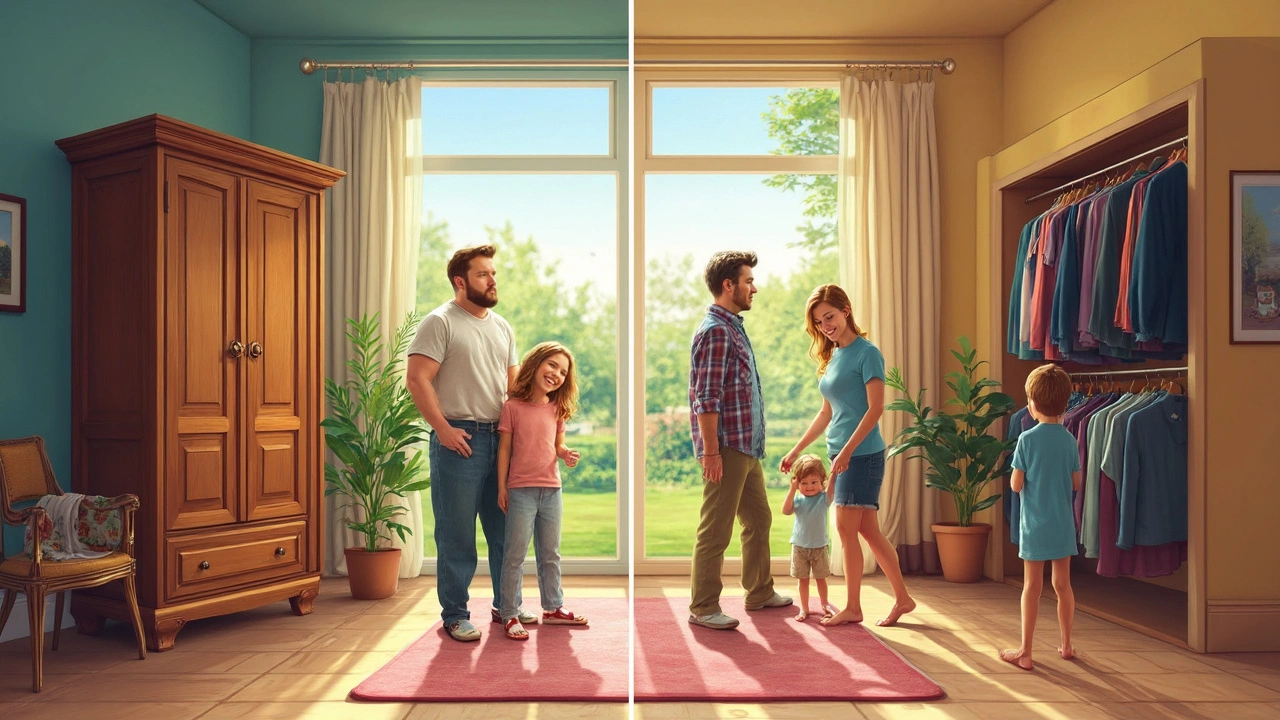
Will the Closet vs. Wardrobe Debate Ever End?
Honestly? It doesn’t look like it. Even as American homes pack in bigger closets, many renters, tiny-home folks, and apartment dwellers still have to fall back on a classic wardrobe—or whatever the container store can offer. In big cities, you’ll spot people using creative hacks: under-bed storage, portable garment racks, or whole walls lined with wardrobes you can shut away when guests visit. Minimalists swear by “capsule wardrobes,” so their built-in or stand-alone storage needs shrink to a fraction of Orla’s hoodie stash.
If you ever switch countries or move stateside, here’s a little tip from a dad who’s helped too many friends pack up apartments:
- Ask about closet space before you sign a lease in the U.S.—some old apartments skip them entirely.
- If you’re headed to Europe or the UK, expect to buy or inherit a wardrobe for your room.
- Closet organization gadgets translate well anywhere, but measure twice and buy once. Those American closet rods are often a different length than what wardrobes fit.
The best part? Whether your stuff hides behind double doors, sliding panels, or inside an old hand-carved oak wardrobe, everyone’s got a secret spot for their favorite sweater—and maybe (if you’re like me) an overworked cat who thinks it’s all for them. Next time you wonder why Americans call wardrobes closets, just smile. This language quirk packs a whole lot of history, while letting all of us sneak away for a minute—or ten—behind our own private doors.

